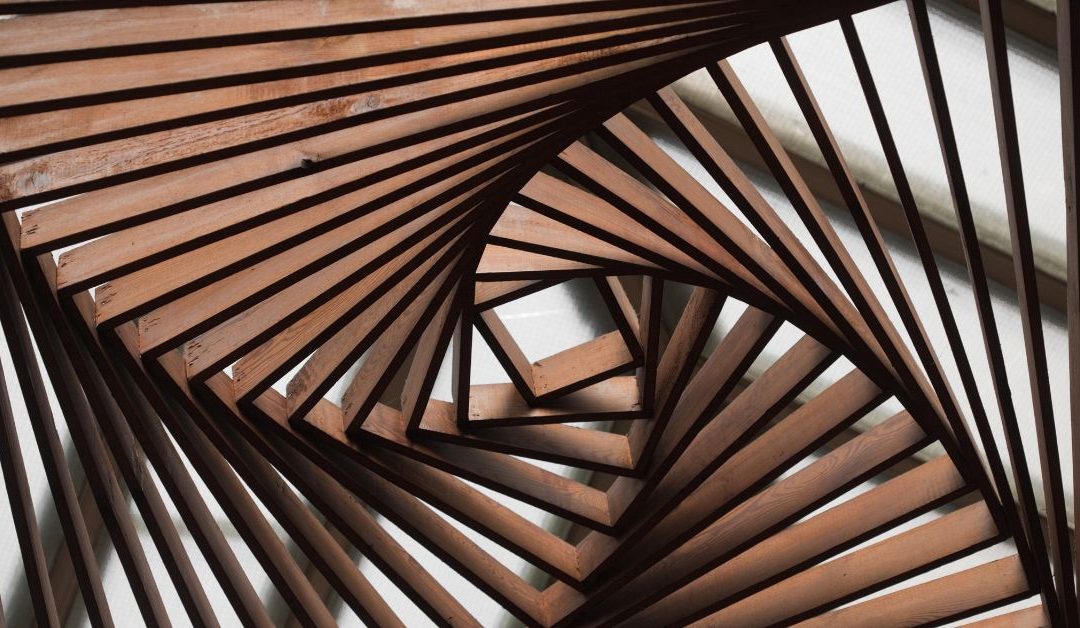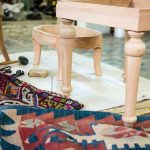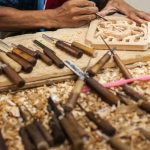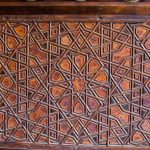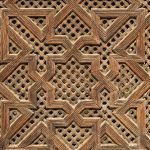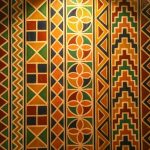Moroccan woodworking and architecture have a long history of influencing each other. From ancient villages to bustling cities, this relationship has shaped the country’s culture and design.
Skilled craftsmen called maalems are good at building houses. They use carpentry and stonemasonry to make houses that look nice and are strong. They use materials like cedarwood and mud brick, and get good designs from Islamic calligraphy and geometric patterns.
The result is a mix of old-fashioned charm and modern usefulness seen all across Morocco today.
History Of Moroccan Woodworking
Moroccan woodworking and architecture have been a part of Moroccan life for a long time. It’s a tradition passed down from generation to generation, and the craftsmen use ancient tools that are still the best.
Every piece made by these craftsmen is more than furniture or a building. It’s a reminder of Morocco’s history and heritage. From carved doors to colorful mosaics, each project shows the skill and high standards of craftsmanship.
The craftsmen, called maalems, have spent years in their trade and gaining experience through practice.
Their hard work continues to pay dividends today as they bring new designs to life using age-old methods that have stood the test of time. As we explore deeper into Moroccan woodworking and architecture, we will find out what sets apart these timeless works of art.
Traditional Craftsmen (Maalems)
Moroccan woodworking has been part of the country’s culture for a long time. Skilled craftsmen called Maalems are making beautiful and intricate pieces for many generations. They take pride in their work and use local materials for the best quality.
Each piece made by these craftsmen represents the culture and history of Morocco. They are unique and irreplaceable. You can find these special works of art all over Morocco, reminding people of its rich heritage.
By carrying on this old tradition, Maalems keep alive one of Morocco’s oldest gem: incredible woodworking.
- Handcrafted furniture
- Intricate decorative elements
- Heirloom quality products
- Traditional carpentry techniques
Materials Sourced In A Local Way
Moroccan woodworkers and architects use local materials to make beautiful and useful things. They care about the environment and use renewable energy and responsible forestry practices.
They follow traditional ways of working to make things that are both pretty and good for the Earth. They respect nature and use sourced wood. They also use renewable energy to protect the planet.
This combination of environmental responsibility and creativity defines Moroccan woodworking and architecture. It shows how sustainability can be part of art.
Now, let’s look at the connection between Islamic calligraphy and geometric patterns in Moroccan design.
Islamic Calligraphy And Geometric Patterns
Islamic Calligraphy and Geometric Patterns in Moroccan woodworking and architecture are cool!
They use special writing called Arabic Scripts and make big structures. They carve fancy designs and use wood panels to create patterns like Kufic Scripts and Complex Geometry in Islamic buildings.
I’m impressed by the craftsmanship and design in Moroccan woodworking and architecture. They pay attention to small details and are very skilled.
Islamic Art and Mosaics are a great way to learn about the culture and traditions of this region – they’re beautiful.
The craftsmanship and design in Moroccan woodworking and architecture are impressive. They pay attention to small details and show a lot of skill.
Islamic Art and Mosaics are a great way to learn about the culture and traditions of this region – they’re beautiful.
Islamic Calligraphy
Islamic calligraphy is an important part of Moroccan woodworking and architecture. It uses beautiful writing combined with decorations to create meaningful art.
You can find calligraphy on doors, windowsills, furniture, and sculptures in Morocco. It adds cultural symbolism to these works.
When we look at Moroccan craftsmanship influenced by Islam, we can learn about the history and values of the country.
These objects are not only pretty; they represent something important in their culture that should last for the future.
Geometric Patterns
Geometric patterns are important in Islamic calligraphy and Moroccan woodworking. They use these patterns to make cool designs that have special meanings.
Artists use special techniques to create these designs on things like doors, furniture, and sculptures. The patterns can represent things like protection, wealth, creativity, and faith.
These designs show the values of Moroccan culture and teach us about their history and diversity.
Geometric patterns are a big part of Morocco’s beautiful art and have meanings that make them even more special.
Cedarwood And Mud Brick
Moroccan woodworking and architecture use special materials like cedarwood and mud brick.
Cedarwood is good for building because it’s strong, lasts a long time, and looks nice. People have been using it for a long time in a sustainable way.
Mud bricks are also important for building in Morocco. They keep buildings warm or cool, they’re good for the environment, and they can turn into different shapes.
Cedarwood and mud brick have a lot of benefits:
- They last a long time without needing much care.
- People can harvest them without hurting the environment.
- Craftsmen can use them to create beautiful designs in buildings.
- Using them is good for the environment because it saves energy and reduces waste.
Moroccan woodworking and architecture teach us how to use special materials in a good way to make pretty buildings that can stay for a long time.
From these projects, we learn how to make spaces that look nice, use materials from nearby, and take care of the environment and traditions.
Crafting Beautiful Structures
I know a lot about Moroccan woodworking and architecture, and I want to talk about how they come together.
To make beautiful structures, craftsmen use fine woodworking techniques like marquetry and inlay.
They use traditional building materialstoo such as cedarwood and plaster.
Craftsmen combine these techniques and materials to create stunning works of art.
Fine Woodworking Techniques
It’s amazing to see what craftsmen can make with woodworking techniques.
I’m always impressed by the tradition and skill that goes into creating these masterpieces.
One important technique is wooden joinery, which holds pieces together without nails or screws.
Hand carving adds extra detail and creativity when making furniture from solid hardwood.
With the right tools and careful work, craftsmen can create beautiful pieces that will last for a long time.
The combination of traditional methods makes works that are breathtaking and admired by everyone who sees them.
Traditional Building Materials
Traditional building materials play a vital role in crafting beautiful structures. In Morocco, wood is the main material used, and it comes from cedar trees harvested in a sustainable way. It’s strong, durable, and perfect for large projects like furniture and houses. Sourcing these materials in a responsible way ensures they’ll be available for future generations.
Along with woodworking techniques, decorative elements add character to structures. Moroccan artisans carve intricate designs by hand, creating unique and beautiful pieces. It takes time and effort, but the results are timeless works of art.
Craftsmen in Morocco use sustainable practices and their skills to make works that show the country’s culture and history. These structures are not only pleasing but also functional and reliable. With dedication and hard work, anyone can create remarkable things using natural materials!
Modern Functionality
Modern woodworking and architecture in Morocco have grown side by side as separate but connected fields. Today, the country is home to a unique set of creative techniques and practices derived from both disciplines.
| Creative Innovation | Sustainable Practices |
| Bespoke Design | Eco-Centered Materials |
| Handcrafted Details | Reclaimed Wood |
| Unique Finishings | Energy Efficiency |
Moroccan artisans use innovative methods to bring traditional charm to their work. They use materials that are good for the environment and systems that save energy. They add special touches like choosing their own colors or textures. This allows them to create pieces that blend rustic charm with modern functionality. Moroccan woodworkers and architects have achieved great success in this area.
Rustic Charm
Moroccan woodworking and architecture have been around for a long time, focusing on the environment. Artisans use special techniques to make furniture and buildings that are unique and beautiful.
They use natural materials like cedarwood, limestone, and ceramic tiles to give a rustic charm to their work. You can see traditional patterns in carvings and decorative wall hangings made from plants native to the area. These designs mix old traditions with modern convenience, making them perfect for any space.
These techniques have made a big difference in Moroccan culture by bringing people together. From vibrant markets to old homes made from local resources, this intersection is important to those who live there.
We can’t wait to see what new projects will come next!
Impact On Moroccan Culture
Moroccan woodworking and architecture have had a big impact on the country’s culture. People have treasured the craftsmanship for a long time, and it’s still important today.
Using local materials like cedarwood and clay is good for the environment. It helps save natural resources and keeps traditional methods alive.
Craftsmen bring people together by making things they can share or sell. This helps families have more opportunities.
We need to keep appreciating Moroccan woodworking and architecture. It’s part of our cultural identity and helps protect the environment.
In the future, we should support these talented makers and their ancient craft.
Appreciation For The Intersection
Moroccan woodworking and architecture have had a big impact on the culture of Morocco. People appreciate the craftsmanship and sustainable practices used in building structures.
Using materials like cork helps protect the environment and make buildings last a long time.
When artists and builders work together, they can make doorways and furniture using recycled materials. It’s a cool way to create something unique and help the environment at the same time. It’s a mix of new and old styles that shows how important it is to be creative and take care of nature.
It’s important to recognize and value the intersection of Moroccan woodworking and architecture. It reflects our culture and how we care for the environment.
eativity and respect for nature’s resources alike.
Frequent-Asked Questions
How Much Does A Moroccan Woodworking Project Cost?
Estimating the cost of a Moroccan woodworking project can be tricky, but with research and comparing prices, you can get an idea of how much it will cost.
These projects tend to be more expensive than other carpentry work because they need intricate designs and patterns.
When budgeting, remember to consider the costs of materials and labor. Skilled artisans and experienced architects are both important for these projects.
What Is The Best Way To Buy Locally-Sourced Materials For Moroccan Woodworking?
When buying materials for Moroccan woodworking projects, think about the cost and where you get them.
Local markets are a good choice because they have fresh and genuine materials.
Compare prices from different sellers to find the best deal. Online marketplaces can also have more options at reasonable prices.
Thus, aim to buy local materials that are both affordable and good quality.
Are There Any Specific Tools Used For Moroccan Woodworking?
Get ready to witness the incredible tools used in Moroccan woodworking!
These tools, like sharp saws and precise chisels, have so many benefits.
They can create smooth finishes and intricate details that will leave you impressed.
Whether you want an antique look or a shiny finish, Moroccan woodworking tools have all the options you need.
Don’t wait any longer – start exploring and discover the magic of these tools today!
How Can I Find A Qualified Craftsman (Maalem) To Work On A Moroccan Woodworking Project?
Finding the right craftsman for your Moroccan woodworking project can be difficult.
To find someone good, start by looking at what other people have said about them and see what designs are popular in the area.
You can also ask locals or experts for advice on finding a reliable craftsman.
Do You Need To Follow Any Safety Rules When Working With Moroccan Woodworking Materials?
When you work with Moroccan woodworking materials, it’s important to make safety your top priority. You need to follow all the rules and regulations to make sure your project is successful and to keep yourself safe.
You need to meet specific standards when using different woodworking techniques. For example, you have to make sure the materials are resistant to fire and moisture, depending on what you’re making. And depending on the style you choose, there might be more safety rules you need to follow to follow the local laws.
So, always remember to stay safe and follow the guidelines when working with Moroccan woodworking materials.
If you’re thinking of starting a project, it’s important to know about the costs and safety rules beforehand.
The best way to succeed is by talking to a skilled Maalem. They can help you buy the right materials and tools from local sources for Moroccan woodworking.
With their help, you can create something amazing while staying within your budget and following the rules.
So if you’re considering investing in this unique craftsmanship, start researching today!

